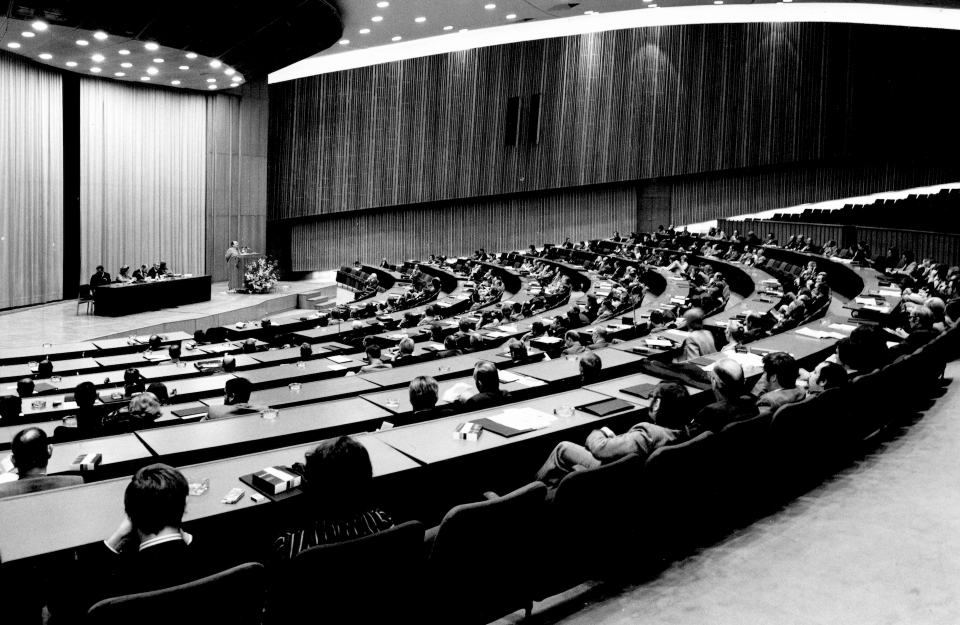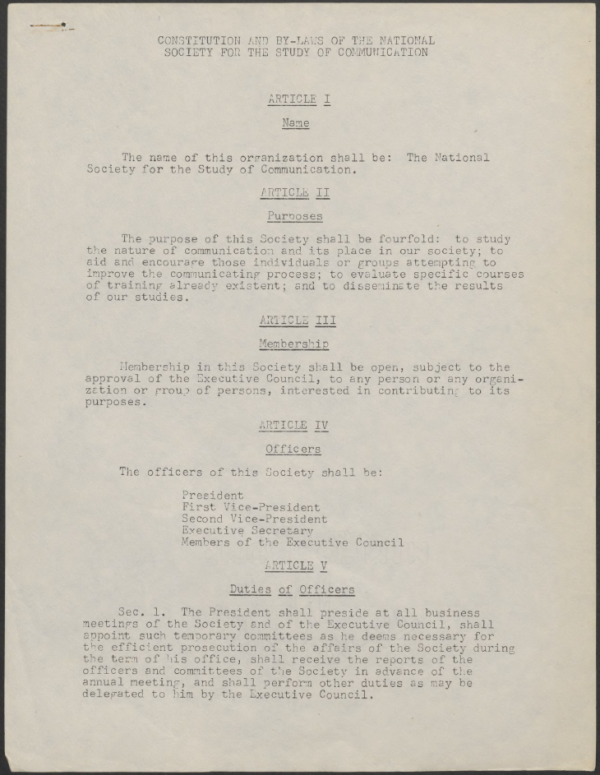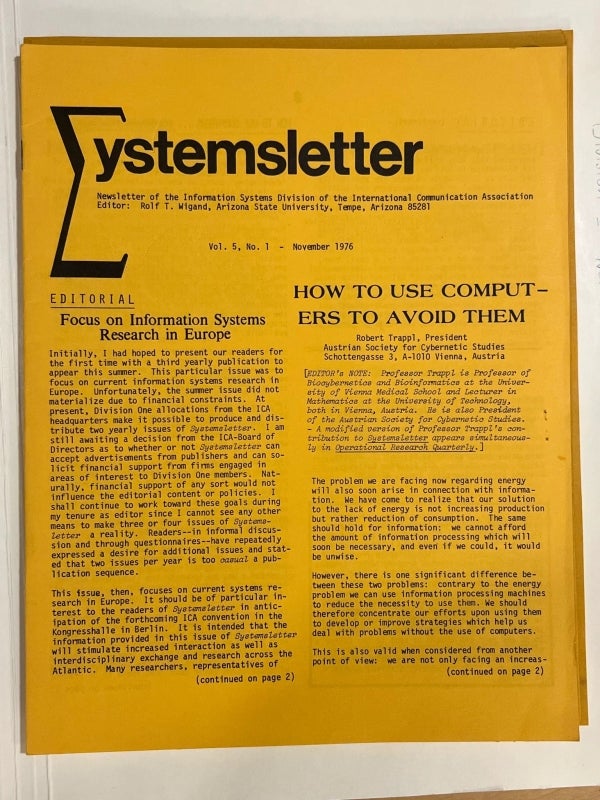Digging Into the Archives of the International Communication Association
Ahead of the 74th Annual International Communication Association Conference, Processing Archivist Andrew Williams looks at the records of the association, now housed in the Annenberg Library.

The 1977 ICA Annual Conference in Berlin
At first glance, administrative records can seem run of the mill, but take a second look and you'll find that they tell a story about the people who wrote and kept them and — in the case of scholars — their studies.
In 2016, the International Communication Association (ICA), an academic organization representing thousands of Media and Communication scholars from around the world, transferred its historical administrative records to the Annenberg School for Communication Library Archives.
The collection not only traces the Association’s history and activities, but also provides insight into the broader history of the modern field of Communication.
The National Society for the Study of Communication
The Association was founded in 1950 as the National Society for the Study of Communication (NSSC), an offshoot of the Speech Association of America (SAA). The NSSC’s mission, as stated in a draft of its constitution, was to “study the nature of communication and its place in our society; to aid and encourage those individuals or groups attempting to improve the communicating process; to evaluate specific courses of training already existent; and to disseminate the results of our studies.”

In 1951, the NSSC introduced its publication program with the printing of the Journal of Communication, which continues to act as a forum for general communication scholarship. In addition to its publications, the NSSC also organized conferences and events, such as its annual summer conventions and interdisciplinary conferences. These gatherings were crucial for the nascent field of Communication, as they provided a venue where scholars from different subfields could share ideas and forge professional connections.
The Start of ICA
By the late 1960s, the NSSC’s membership increased exponentially. In 1967, it formally split from its parent organization, the SAA, and to reflect its new identity and its increasingly international membership, the NSSC renamed itself the International Communication Association. The ICA has since added several journals to its publication program, such as Human Communication Research, and Communication Theory. Through its conference and publications program, the ICA remains a network and platform for communication scholars worldwide.
In many respects, the history of the ICA is a reflection of the field it was organized to promote. This is perhaps most evident in the records pertaining to the development of ICA’s interest group and divisions. Soon after the founding of the NSSC, its officers implemented fifteen thematic ‘study and research’ committees, such as the ‘Committee on Listening Comprehension,’ ‘Committee on Propaganda,’ and the ‘Creative Thinking Committee,’ which were intended to produce original research and serve as forums for members with overlapping interests. However, in part due to waning membership interest in the established themes, many of were inactive by the mid-1960s.

Interest Groups
The research committees were replaced in 1967 by an interest group-division system, which is still in use today. Unlike the committees, interest groups could only be created and maintained with adequate member enrollment. Interest groups can be established with a petition representing at least 3% of ICA memberships. If an interest group expands to represent 5% of membership, it could acquire division status. Likewise, interest groups can be dissolved if membership levels fall under 2% of the total membership. Some of ICA’s current divisions include Environmental Communication, the Information Systems, and Mass Communication.

While the NSSC’s research committees did not necessarily and proportionally reflect the scope of its members’ interests, they nevertheless provide a snapshot of the early years of the field when communication scholars labored to formulate an identity for a discipline built on disparate curricula.
For historians, the ICA records and the evolution of its variegated interest groups and divisions can serve as a vane for mapping trends and research interests in the field over time.
The International Communication Association Records (1946 – 2016) archives are part of the Annenberg School for Communication Library Archives's "History of the Field" collection.
To see the ICA collection inventory and to read more about ICA’s history, access the collection finding aid.
This article was originally posted on Unique at Penn, part of the family of University of Pennsylvania Libraries blogs.



